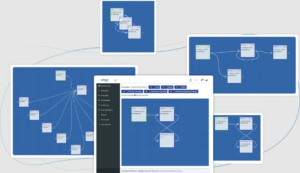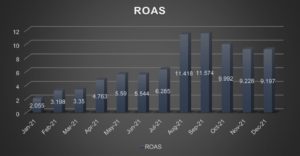Prime Day Guide for Sellers
What is Amazon Prime Day?
Prime Day is Amazon’s biggest sale that happens annually. It is a yearly event that lasts for two days, and it is exclusive for Amazon’s Prime Members. Non-Prime members may also sign up for a free 30-day trial period to allow them to enjoy the exclusive benefits that Prime Members enjoy.
It was established to encourage buyers to spend outside the October-December holiday season.
When did Prime Day Start?
Prime Day started on Amazon’s 20th anniversary; it began on July 15, 2015. It was established for Prime Members to offer deals bigger than Black Friday. It lasted for 24 hours and spanned across 9 countries (US, UK, Spain, Japan, Italy, Germany, France, Canada, and Austria).
Prime Day Highlights Over the Years
2015 (July 15)
- Amazon’s Prime Day Sales over shadowed Black Friday sales for 2014, and it was their biggest Black Friday event ever
- More than 34.4 million items were ordered (398 items ordered/second) across Prime-eligible countries
- Amazon FBA sellers enjoyed a record-breaking unit sales growing nearly 300% worldwide
2016 (July 12)
- Prime Day 2016 surpassed Prime Day 2015’s sales by more than 60% worldwide
- Belgium also participated in this event, bringing a total of 10 countries
- Prime Members saved more than double on deals compared to Prime Day 2015
- Small businesses and sellers who offered Prime deals saw a triple increase on their orders
2017 (July 11-12)
- Prime day 2017 lasted for 30 hours
- Prime members made 50% more purchases than Prime Day 2016
- 12 countries participated in this major event (with the addition of Mexico and China)
- Millions of customers shopped through the Amazon app on Prime Day, an increase twice the number compared to 2016
2018 (July 16-17)
- The biggest global shopping day in Amazon’s history
- Prime Day 2018 lasted for 36 hours
- Prime members worldwide purchased more than 100 million products
- Small and medium sized businesses exceed $1.5 billion sales on this event
- Customers bought more than 5 million items in each of these categories: Toys, Beauty, PCs & Computer Accessories, Apparel and Kitchen
2019 (July 15-16)
- Prime Day 2019 lasted for 48 hours
- 18 countries participated in this ever-growing worldwide event (US, UK, Spain, Singapore, the Netherlands, Mexico, Luxembourg, Japan, Italy, India, Germany, France, China, Canada, Belgium, Austria, Australia and UAE)
- Prime Day 2019 surpassed Black Friday and Cyber Monday sales of the previous year, combined!
- Members purchased more than 175 million items from devices to groceries throughout Prime Day
2020 (October 13-14)
- Prime Day 2020 was delayed due to supply chain issues affected by the COVID -19 pandemic
- Turkey participated in the event, which increased the number of participating countries into 19
- Amazon invested $18 billion to help small and medium sized businesses and a funding promotion that drove over $900 million in sales
- Despite the delay, sellers still saw a record-breaking sale of $3.5 billion worldwide
- Prime Members saved over $1.4 billion in deals during the event
2021 (June 21-22)
- 20 countries participated in Prime Day 2021 (U.S., the UK, the United Arab Emirates, Turkey, Spain, Singapore, Saudi Arabia, Portugal, the Netherlands, Mexico, Luxembourg, Japan, Italy, Germany, France, China, Brazil, Belgium, Austria, and Australia)
- Customers spent over $1.9 billion more on more than 70 small business products two weeks prior to the event, this was due to the Amazon funded promo Spend $20, Get $10
- Best-selling categories included tools, beauty, nutrition, baby care, electronics including Amazon Devices, apparel, and household products
- There was a massive uptick in sales of back-to-school items as governments were easing up on the lockdowns and letting children go back to school.
- Amazon introduced free replacements for MFN orders
- Amazon livestream selling and product demonstrations gathered tens of millions of viewers on Prime Day 2021
What to expect on Prime Day 2022?
- It is highly likely that Prime Day will happen in the middle of July
- There has been a huge shift in buyer’s shopping behavior and people are shopping online more than ever
- Amazon remains the top shopping website in the US
- Amazon’s main demographics base (middle aged women) are thriftier than the previous years. Consumers are making fewer impulse purchases and are saving up on bigger purchases like a new house
- Due to the financial uncertainties that Americans experienced over the past two years, US buyers are reducing their overall spending and are more compelled to make a purchase when they get a deal, coupons, discounts and save on bundles
- Social Media influence is getting bigger and bigger, and a lot of buyers make a lot of buying decisions based on product recommendations and reviews from YouTube, Instagram, Facebook or TikTok influencers.
How can Sellers Prepare for Prime Day?
- Review and optimize – check your listings, go over your product images, title, bullets, product description to see if they are fully optimized, this is very important as there will be millions of participating products, you must make sure that your product speaks to the customer and address their needs
- Check inventory – To avoid running out of stock on Prime Day, it is best to start checking your current inventory levels and sales history from past Prime Days. This will give you a rough estimate of how much inventory you should have on hand to avoid understocking or overstocking.
- Ship FBA inventory on time – FBA sellers should make sure that their new inventory reaches the fulfillment centers on or before the set deadline.
- Start driving traffic thru advertising now – this will save you advertising costs on the actual Prime Day event. Spend now while the CPC cost is still comparatively low and build on your organic ranking slowly but surely.
- Set prices strategically – the Prime Rewards Visa card comes with a $50 welcome bonus and a $100 gift card on approval. You may consider pricing your items so that they’re well within the $150 limit. Price competitively and flexibly.
- Create exclusive deals, discounts, coupons, and bundles – Prime day is focused on helping customers save thru deals and low-priced items. Use Amazon coupons, Lightning Deals, create Promotions and Bundle your products to make the discount even more enticing.
- Do your research on other marketplaces – Walmart, Target, Home Depot and other companies have competing Prime Day sale. If you sell on other channels, make sure to update your listings and apply your deals and discounts there as well.
- Maximize your social media outlets – combining optimized product listing, PPC advertising and leveraging social media channels is a great strategy to achieve success on Prime Day. You can run Amazon Live on products you want to highlight, post your deals on Facebook, Instagram or TikTok to build traffic on your listing.
- Check your competitors – do a competitor analysis to identify differences in product listing and bridge the gap in your own listing. You can also target their ASIN with sponsored ads to gain an edge over your competition and increase visibility.
Final Thoughts
Amazon Prime Day grows bigger each year, and more countries are joining this event. As a seller, it makes a difference to plan and prepare carefully to ensure success. Prime Day is not only an opportunity to make a lot of sales, but also to raise brand awareness and increase customer trust in your brand and products.






